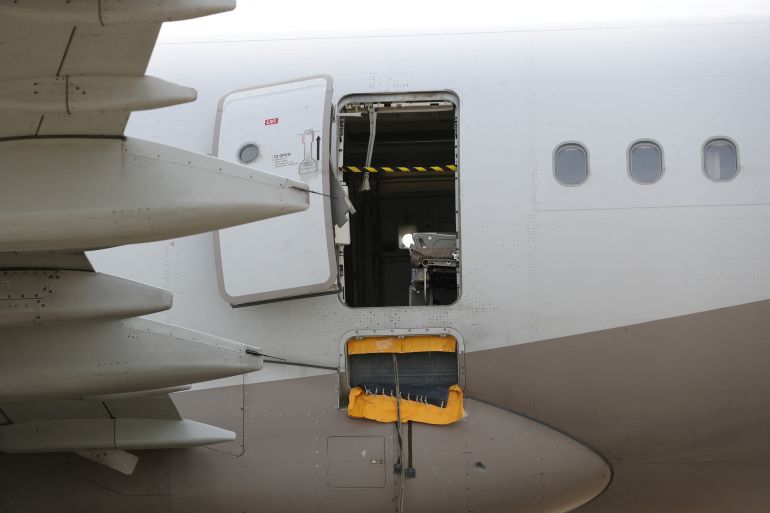S Korea’s Asiana Airlines bans emergency seats after door opens
The move comes after a passenger opened an emergency exit door midair, causing shock and panic on board.

South Korea’s Asiana Airlines has stopped selling some emergency exit row seats following an accident in which a passenger opened an emergency exit door midair causing panic on board.
The incident took place on an A321-200 plane, which was carrying nearly 200 passengers, as it approached the runway at Daegu International Airport, about 240km (150 miles) southeast of Seoul. The plane landed safely but several passengers were hospitalised. There were no serious injuries or damage.
Keep reading
list of 2 itemsSouth Korea restores Japan to trade white list amid warming ties
The airline told the AFP news agency on Sunday the emergency exit seats – 31A and 26A – on its 14 A321-200 jets would no longer be offered for sale. “As a safety precaution, this measure will apply even if the flights are full,” it added.
It is however unclear how the move might stop passengers seated elsewhere on the plane from attempting to open the emergency door.
The man, in his 30s, was arrested by authorities in Daegu for allegedly breaking aviation security laws. He faces up to 10 years in prison if convicted.
He told Daegu police that he had been under a lot of stress after losing his job recently and that he opened the door because he wanted to get off quickly after feeling suffocated, South Korea’s Yonhap news agency reported on Saturday.
A Daegu police detective was quoted as saying: “He felt the flight was taking longer than it should have been and felt suffocated inside the cabin.”
Video footage apparently taken by a person on board and posted on social media showed passengers’ hair being whipped about by air rushing into the cabin when the emergency door opened.
It is still unclear how Lee was able to open the emergency exit door mid-flight.
Jin Seong-hyun, a former Korean Air cabin safety official, said as far as he knew, this case was unprecedented, although passengers have opened emergency exits without authorisation while planes were on the ground.
A South Korean transport ministry official said it was possible to open emergency exits at or near ground level because the pressures inside and outside the cabin were similar.